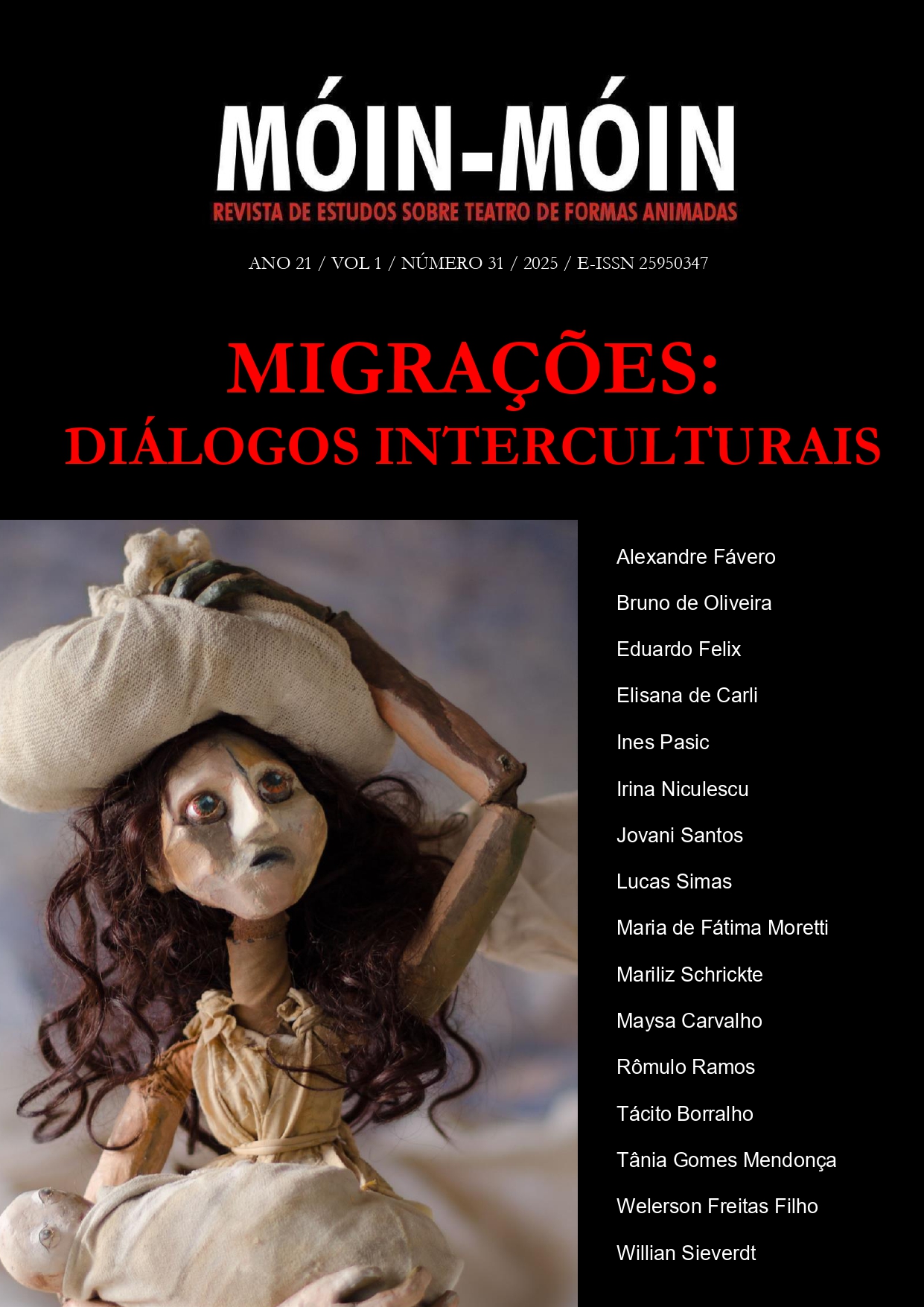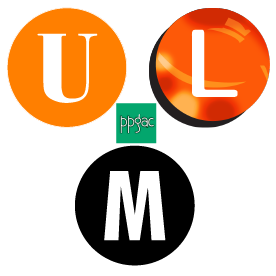Elefanteatro: o espetáculo que anda do pigmalião escultura que mexe
DOI:
https://doi.org/10.5965/2595034701312025129Palavras-chave:
teatro, teatro de formas animadas, boneco gigante, pigmalião escultura que mexe, elefanteatroResumo
O artigo descreve o processo de concepção do espetáculo Elefanteatro, um cortejo de rua protagonizado por um boneco gigante que narra a saga de uma família migrante em busca de uma vida melhor para se viver. A temática da imigração e da sustentabilidade se infiltram na diegese do espetáculo liderado pelo grupo de teatro de formas animadas Pigmalião Escultura que Mexe em parceria musical com o Grupo Oriundo de Teatro. Trazendo reflexões que se aproximam com os conceitos de “vida nua” e “vida precária”, de Giorgio Agamben e Judith Butler, respectivamente, a obra pactua com o compromisso político da representação artística em ativar novas percepções e provocar fissuras diante de tempos carimbados pela crueldade e intolerância.
Downloads
Referências
AGAMBEN, Giorgio, 1942-.Estado de exceção; tradução de Iraci D. Poleti. São. Paulo: Boitempo, 2004.
____________________. Homo sacer: o poder soberano e a vida nua I. Tradução Henrique Burigo. Belo Horizonte: Editora UFMG, 2010.
BUTLER, Judith. Vida precária. Contemporânea – Revista de Sociologia da UFSCar. São Carlos, Departamento e Programa de Pós-Graduação em Sociologia da UFSCar, 2011, n.1, p.13 -33.
_____________. Vida precária: os poderes do luto e da violência. Trad. Andreas Lieber. Belo Horizonte: Autêntica, 2019. 189 pp.
FELIX, Eduardo. Elefanteatro. Dramaturgia do espetáculo do grupo Pigmalião Escultura que Mexe. Belo Horizonte, 2023.
FELIX, Eduardo; SANTANA, Tatá. Elefanteatro. Trilha sonora do espetáculo do grupo Pigmalião Escultura que Mexe. Belo Horizonte, 2023.
LEHMANN, H. Teatro Pós-Dramático. São Paulo: Cosac Naify, 1999.
RANCIÈRE, Jacques. A Partilha do Sensível: estética e política. São Paulo: Ed. 34, 2005.
Downloads
Publicado
Como Citar
Edição
Seção
Licença
Copyright (c) 2025 Móin-Móin - Revista de Estudos sobre Teatro de Formas Animadas

Este trabalho está licenciado sob uma licença Creative Commons Attribution 4.0 International License.
Ao submeter um artigo à Móin-Móin Revista de Estudos Sobre Teatro de Formas Animadas e tê-lo aprovado os autores concordam em ceder, sem remuneração, os seguintes direitos à Revista: os direitos de primeira publicação e a permissão para que a Revista redistribua esse artigo e seus metadados aos serviços de indexação e referência que seus editores julguem apropriados.
Os artigos cujos autores são identificados representam a expressão do ponto de vista de seus autores e não a posição oficial da revista Móin-Móin.
Plágio, em todas as suas formas, constitui um comportamento antiético de publicação e é inaceitável. A Revista Móin-Móin reserva-se o direito de usar software ou outros métodos de detecção de plágio para analisar os trabalhos submetidos.
![]()
Este obra está licenciado com uma Licença Atribuição-NãoComercial 4.0 Internacional






